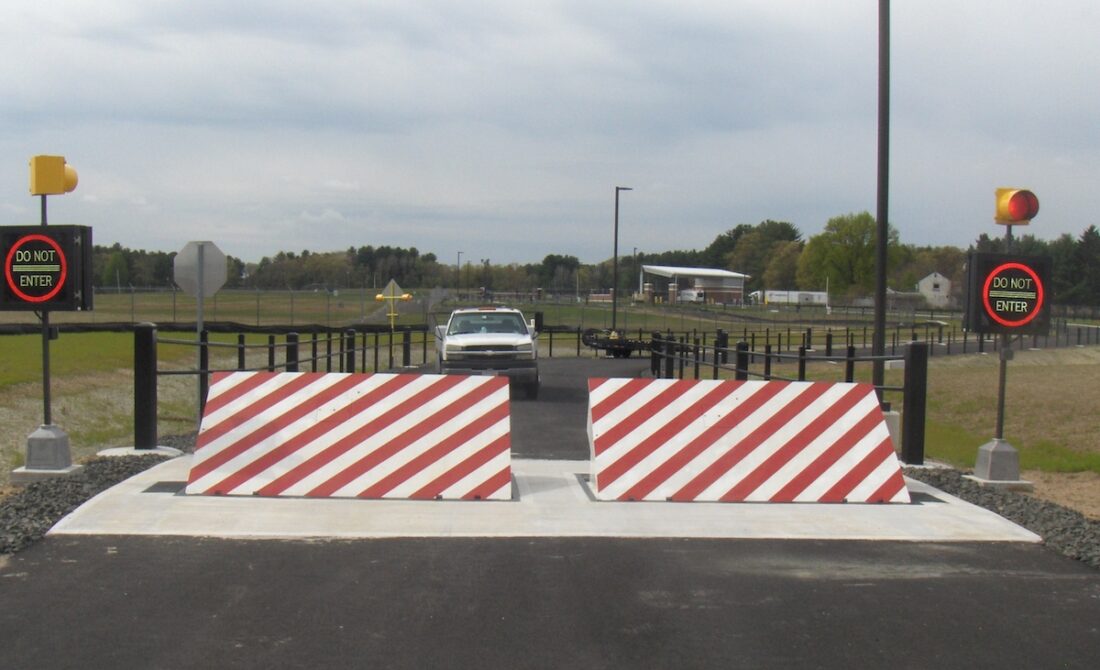Some Known Factual Statements About Wedge Barriers

Some Known Details About Wedge Barriers
g., spring support 65 )might be dealt with to completion of the springtime pole 58 to make it possible for compression of the springtimes 60. As the springtimes 60 are pressed between the springtime supports 62, the spring setting up 54 creates a pressure acting upon the web cam combined to the springtime pole 58 in a direction 66. The staying force applied to
the cam web cam deploy release wedge plate 16 may might provided offered an electromechanical actuator 84 or other actuator. Because of this, the springtime assembly 54 and the actuator 84(e. g., electromechanical actuator)might run with each other to translate the camera and lift the wedge plate 16.
As pointed out above, the spring setting up 54 applies a constant pressure on the camera, while the electromechanical actuator might be managed to exert a variable force on the webcam, consequently making it possible for the training and lowering( i. e., deploying and retracting )of the wedge plate 16. In particular embodiments, the consistent pressure applied by the spring assembly 54 may be adjustable. g., electromechanical actuator) is disabled. As will be appreciated, the spring assembly 54 may be covered and protected from particles or various other components by a cover plate(e. g., cover plate 68 displayed in FIG. 4) that might be significantly flush with the raised surface 38 of the structure 14. As mentioned above, in the released placement, the wedge plate 16 offers to obstruct accessibility or traveling beyond the obstacle 10. For instance, the barrier 10(e. g., the wedge plate 16 )might obstruct pedestrians or vehicles from accessing a home or pathway. As reviewed over, the barrier 10 is affixed to the anchor 30 protected within the structure 14,

front brackets 71. Because of this, the link settings up 72 may pivot and rotate to enable the collapse and extension of the link settings up 72 throughout retraction and implementation of the bather 10. The affiliation assemblies 72 cause activity of the wedge plate 16 to be restricted. For instance, if a lorry is traveling towards the deployed wedge plate 16(e. As find out an example, in one circumstance, the security legs 86 may be extended duringupkeep of the barrier 10. When the security legs 86 are deployed, the security legs 86 sustain the weight of the wedge plate 16 against the surface 12. Consequently, the training mechanism 50 might be shut off, serviced, eliminated, changed, etc. FIG. 5 is partial viewpoint sight of an embodiment of the surface-mounted wedge-style barrier 10, highlighting the camera 80 and the camera surface areas pop over to this site 82 of the training mechanism 50. Specifically, 2 cam surface areas 82, which are referred to as lower webcam surfaces 83, are positioned listed below the web cam 80. The reduced camera surface areas 83 might be dealt with to the surface 12 (e. As an example, the reduced camera surface areas 83 and the mounting plate 85 may create a single item that is safeguarded to the support 30 by bolts or various other mechanical fasteners. In addition, two webcam surface areas 82, which are described as upper cam surfaces 87, are positioned over the webcam 80 and combined to (e. In various other embodiments, intervening layers or plates may be placed between the surface area 12 and the reduced web cam surfaces 83 and/or the wedge plate 16 and the top web cam surfaces 87 As mentioned above, the cam
80 equates along the camera surfaces 82 when the wedge plate 16 is lifted from the withdrawed setting to the deployed setting. In addition, as discussed over, the spring setting up 54 (see FIG. 3 )may offer a force acting upon the cam 80 in the direction 102 through spring pole 58, which might decrease the force the electromechanical actuator 84 is called for to put on the camera 80 in order to published here actuate and lift the wedge plate 16. 1 )to the released position(see FIG. 4). As shown, the cam 80 includes track wheels 104(e. g., rollers), which contact and translate along the webcam surface areas 82 throughout procedure.